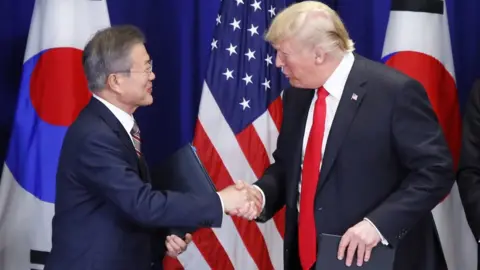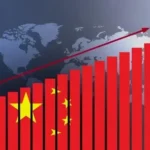Washington, D.C. — Former U.S. President Donald Trump has once again placed the issue of cost-sharing for U.S. military deployments abroad on the negotiating table, this time in the form of what he refers to as a “one-stop shopping” strategy. The approach involves combining trade, tariffs, and defense contributions into a single negotiation framework with key allies, a move that may have significant implications for countries such as South Korea.
Trump Highlights “One-Stop Shopping” Strategy
In a post on Truth Social dated April 8, Trump shared that he had held discussions with South Korea’s then-acting President Han Duck-soo, highlighting the topic of military cost-sharing among other bilateral issues. “We are bringing up other subjects that are not covered by Trade and Tariffs, and getting them negotiated also. ‘ONE STOP SHOPPING’ is a beautiful and efficient process!!!” he wrote.
South Korea’s Current Role and Position
The news says that there are around 28,500 U.S. troops that South Korea is currently hosting and it is all going under the United States Korea (USFK) arrangements.
Although the statement from South Korean officials has been that the situation related to increased defense payments is not under any active discussion. However, top presidential candidates, Lee Jae-myung and Kim Moon-soo, have shown that they may be willing to discuss the issue in future talks.
Concerns Over a Transactional Approach
According to policy analysts, however, a transactional approach to foreign alliances where security commitments are weighed in direct financial terms could pose challenges. Experts caution that such a strategy may affect the perception of the United States as a reliable partner in the Asia-Pacific region.
“It’s the way he does business,” said Bruce Bennett, a professor at the RAND School of Public Policy, in a recent interview. “He may not necessarily want to withdraw forces, but he does want greater recognition of allied responsibility,” Bennett added.
South Korea’s Potential Budget Increase
There are talks that “the Korean government has been volunteering to increase their budget by $3-4 billion, with modernized equipment. This could include purchasing more U.S.-made military equipment, thereby strengthening bilateral security ties while allowing the United States to shift its strategic focus toward China.
Indeed, discussions around force structure and regional strategy have been gaining momentum. In 2024, U.S. Under Secretary of Defense Elbridge Colby stated that U.S. Forces Korea should evolve to become more relevant in managing regional challenges beyond the Korean Peninsula, particularly concerning China.
South Korea’s Rising Defense Budget
As per the data published by SIPRI (Stockholm International Peace Research Institute), South Korea spent around 2.6% of its GDP on defense in 2024. This exceeds the global average of 2.5%. Looking at this year’s Seoul’s defence budget rose by 3.1% to reach 61.25 trillion won which is approximately $43.83 billion.
Despite these figures, critics argue that tying military presence to financial transactions may ultimately undermine long-term strategic relationships. “Using defense deployments as leverage in trade discussions could damage U.S. credibility,” said Hoshik Nam, assistant professor of sociology and political science at Jacksonville State University. “In the long term, this position could reframe the U.S. as an isolated superpower.”
The history of U.S.-South Korea defense cost-sharing agreements reflects an evolving partnership. Initially, under the 1966 Status of Forces Agreement (SOFA), Seoul was not required to make any financial contribution. That changed in 1991, when South Korea agreed to share costs in logistics, local labor, and military construction. The shift coincided with the country’s rapid economic development and the mutual desire to redefine their bilateral relationship.
Nam pointed out that cost-sharing has also benefited the South Korean economy. Local construction companies have led most infrastructure projects, and domestic firms have supplied equipment and services required by U.S. forces stationed there.
Implications of Trump’s Return and Policy Shift
As per the data of October 2024, South Korea did plan to increase its U.S. troops’ hosting by 8.3% in 2026. This means it brings the total to 1.52 trillion won which is $1.13 billion. This agreement, reached during the Biden administration, is intended to cover the period from 2026 to 2030.
However, Trump’s push for an integrated negotiation model linking military cooperation with trade terms could place that agreement under scrutiny if he returns to office. Observers warn that a departure from the established framework may prompt reconsideration from both sides and inject uncertainty into the alliance.
Strategic Alliances in a Changing World
As regional dynamics shift and global alliances face renewed tests, the direction of U.S. policy on defense cooperation remains closely watched particularly in Asia, where strategic balances are increasingly tied to both economic and security considerations.






